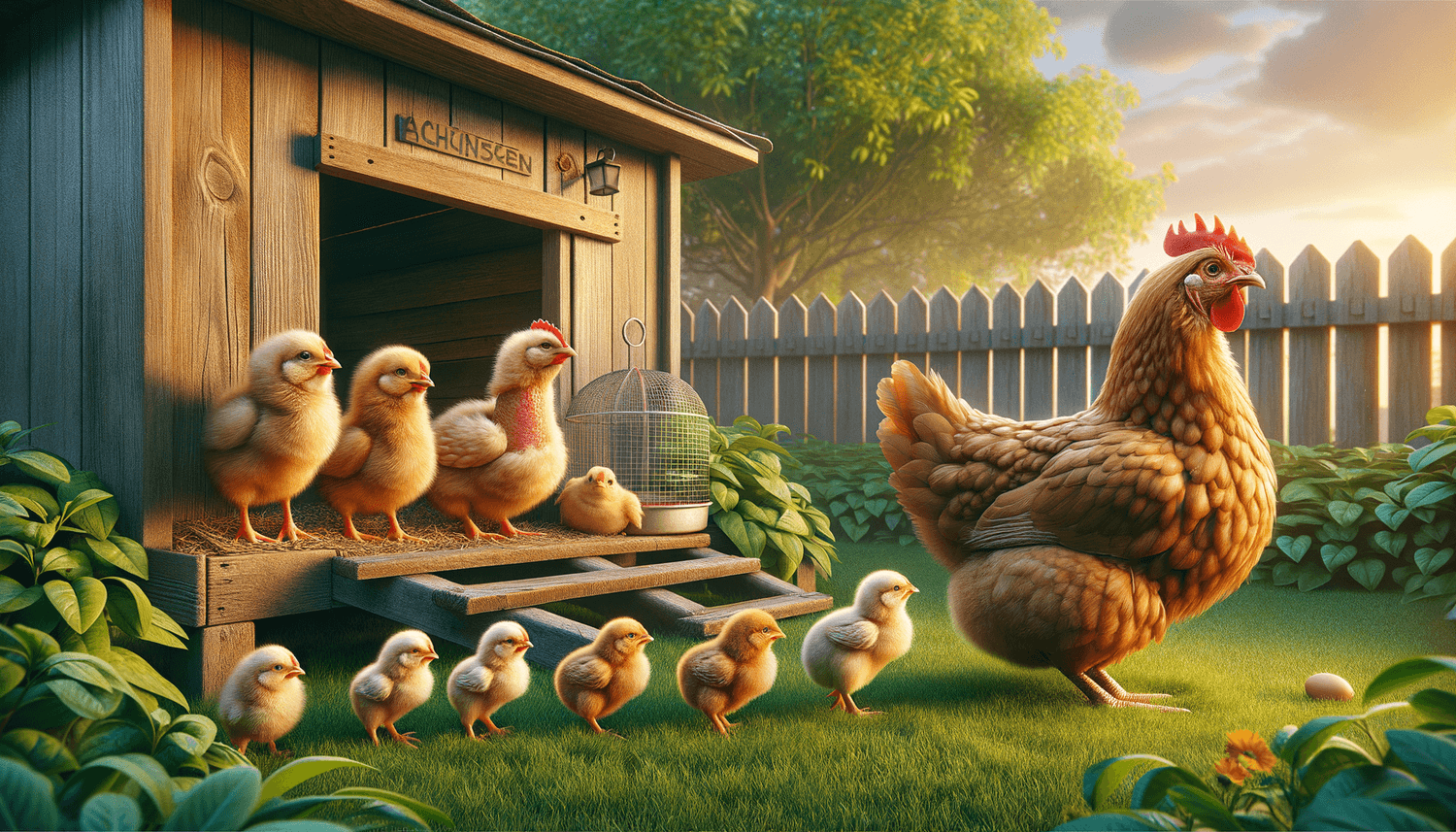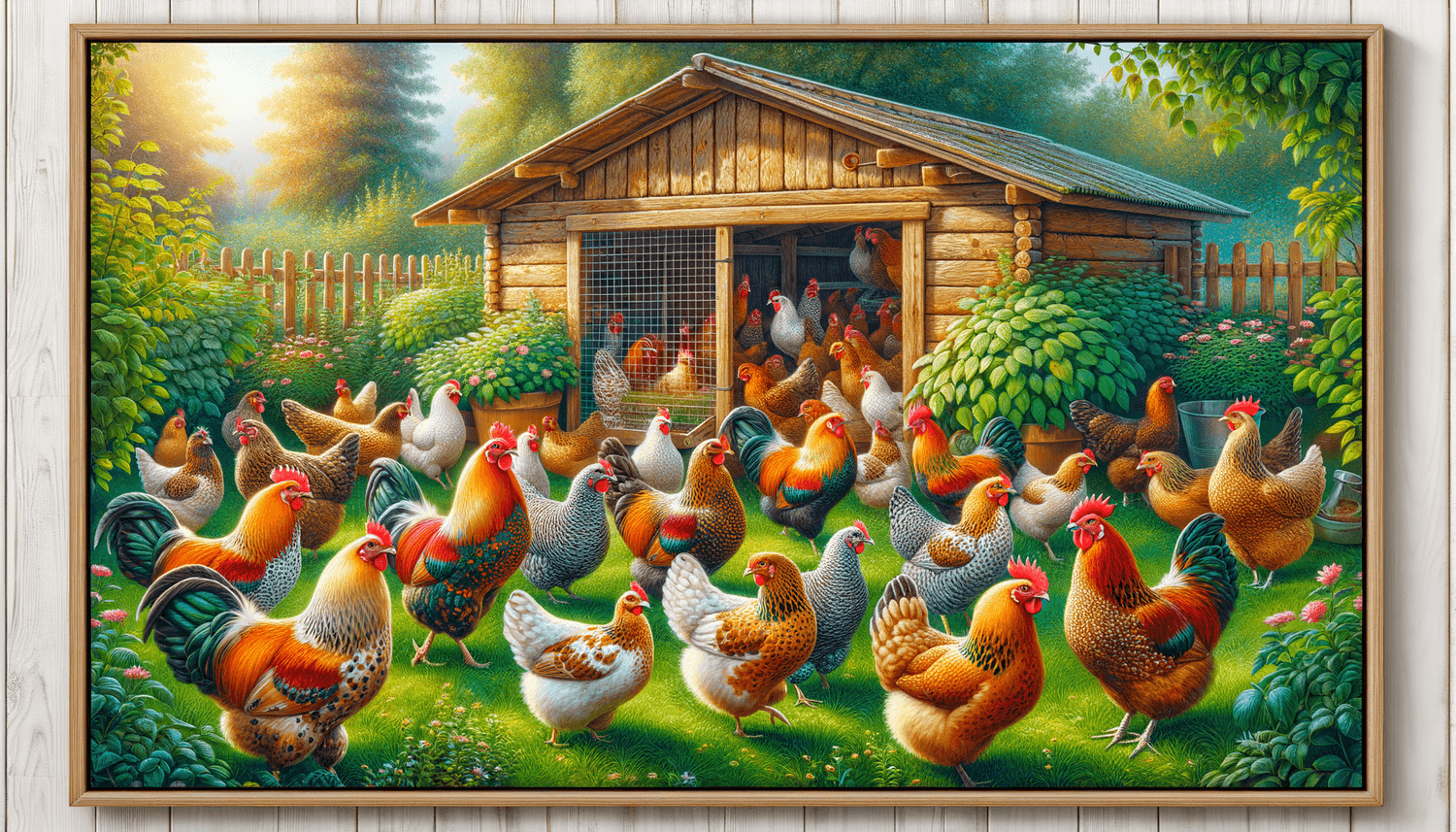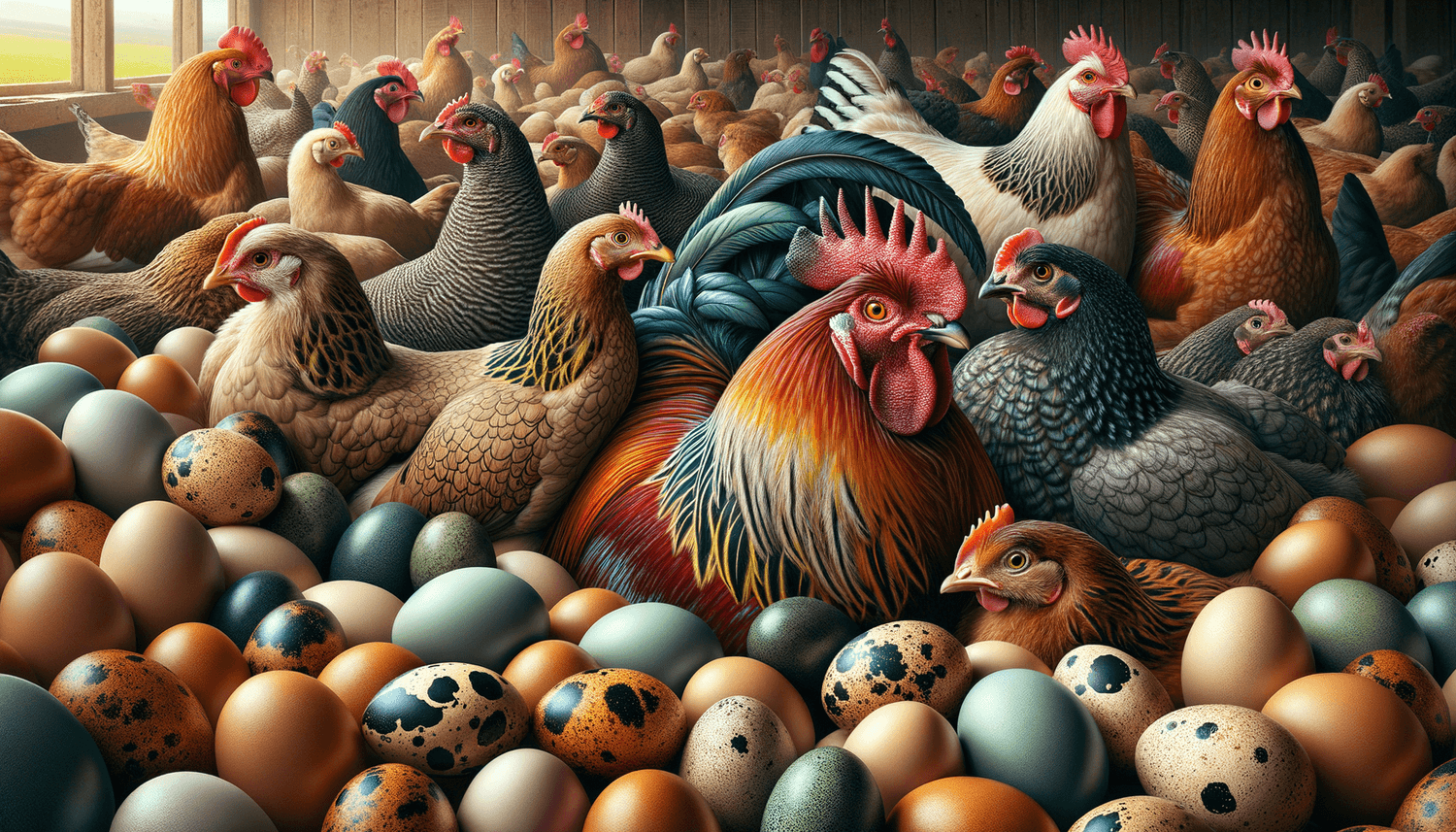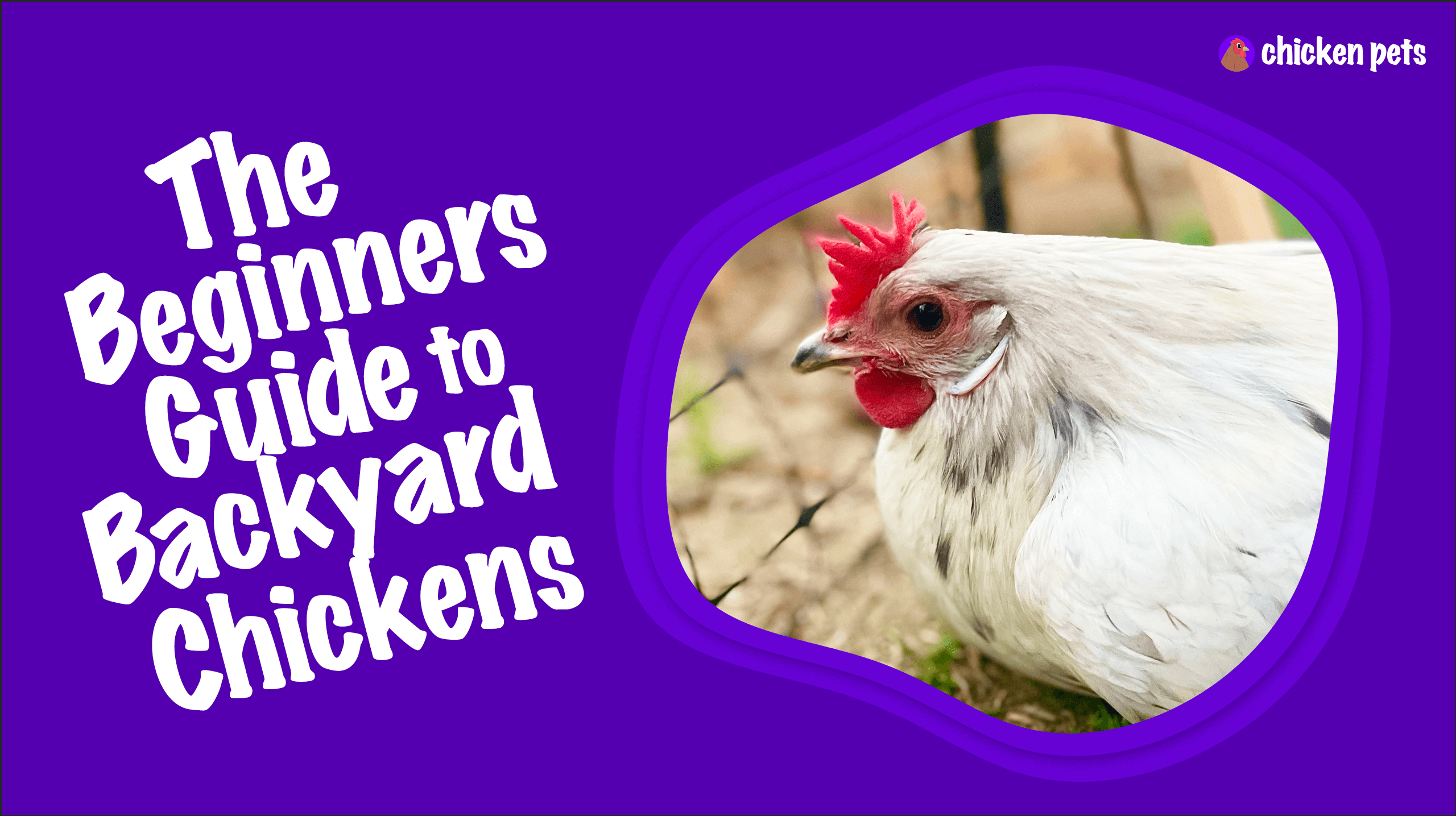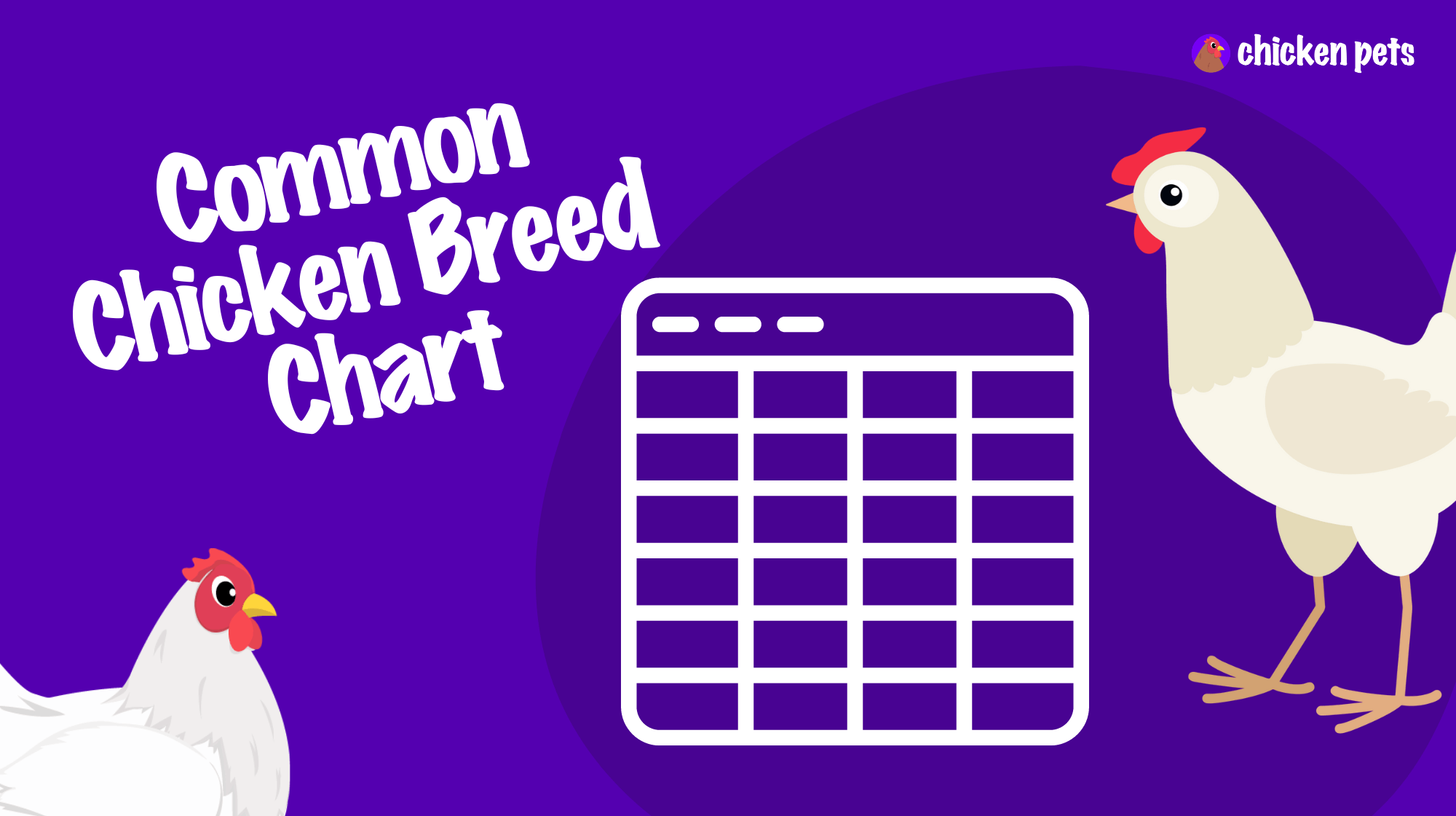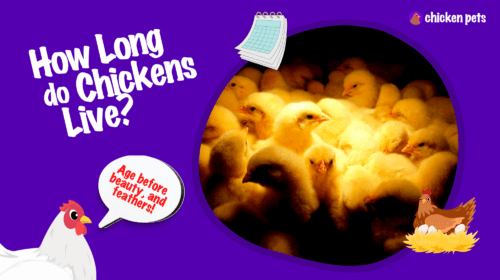Ever wondered about the growth journey of your backyard chickens? Join us as we explore the stages of chicken development, the factors that affect their growth, and the best practices to ensure your flock’s health and happiness.
How Fast Do Chickens Grow?
Chickens grow relatively quickly, typically reaching maturity in about 4-6 months, depending on the breed. Factors such as nutrition, environment, and genetics can influence the growth rate of your flock.
Understanding the Growth Stages of Chickens
When raising backyard chickens, it’s essential to understand the different growth stages these birds go through. Each stage brings its unique challenges and needs. Here, we’ll break down the three primary stages of chicken development.
Hatchling to Chick (0-6 weeks)
During this stage, cuddly and adorable chicks require special care and attention. They hatch with a thin layer of down, which isn’t sufficient to keep them warm. To ensure optimal growth in their early days, focus on:
- Temperature: Maintain a brooder temperature of 90-95°F in the first week, and decrease it by 5°F each week.
- Nutrition: Provide your chicks with chick starter feed, containing approximately 18-20% protein for proper muscle development.
- Hydration: Make clean, fresh water available at all times.
Growing Chick to Pullet (6-20 weeks)
During this period, chicks transition into young, teenage chickens called pullets (females) and cockerels (males). Their requirements will change, and you’ll need to adapt their care accordingly:
- Feeding: Change their diet to grower feed with 14-16% protein levels to support gradual, healthy growth.
- Space: Provide ample space for exercise and exploration, which is essential for the mental and physical development of your chickens.
- Coop Setup: Ensure the coop has the necessary roosting bars, nesting boxes, and perches to accommodate your growing flock.
Adult Chicken (20 weeks and beyond)
When your chickens reach around 20 weeks, they’ll be considered adults. At this point, their needs stabilize, and their care routine becomes more consistent:
- Nutrition: Provide layer feed containing calcium for strong shell development, as they begin to lay eggs (for hens).
- Regular Health Checks: Monitor your flock for signs of illness and mites, helping to maintain a healthy, happy flock.
- Environmental Enrichment: Offer your chickens toys, dust baths, and foraging opportunities to keep them entertained and mentally stimulated.
Factors Affecting Chicken Growth Rate
Several factors can influence the growth rate of your backyard chickens. By having control over these factors, you’ll be able to ensure the proper development and overall health of your flock. Let’s take a closer look at each one.
Breed
Different chicken breeds grow at different rates. For example, commercial breeds like Cornish Cross and Red Rangers grow much faster, reaching maturity within 6-7 weeks. Meanwhile, heritage breeds, like Rhode Island Reds and Plymouth Rocks, grow slower and typically mature around 18-24 weeks. Before selecting your chickens, research breed growth rates to know what to expect.
Nutrition
Chickens need a well-balanced diet that provides them with the right nutrients for growth. Selecting appropriate feeds for each stage of their life ensures an optimum growth rate. To support your chickens through their growth stages, provide chick starter, grower, and layer feeds containing the proper amounts of protein, vitamins, and minerals.
Environment
Creating a comfortable and stress-free environment is crucial for the healthy growth of your chickens. Provide adequate space, clean water, and a balanced diet. Maintaining a clean and well-ventilated coop will help prevent diseases and parasites that may hinder your flock’s growth.
Genetics
Genetics play a significant role in determining the growth potential of your chickens. Responsible breeding practices can result in good growth rates, hardiness, and better overall health. Purchasing your chicks from reputable breeders or hatcheries will give your flock the best chance of developing well.
How to Ensure Proper Development of Your Flock
As a backyard chicken keeper, you can take several steps to make sure your chickens grow at their optimal rate. Paying attention to health, nutrition, and the environment will set your flock up for success. The following guidelines will help you establish a thriving, happy flock.
Proper Nutrition
Provide your chickens with the right feeds for their growth stage. This will supply them with the necessary nutrients to support development. Include age-appropriate supplements like grit for digestion and oyster shells for calcium to meet their nutritional needs.
Safe and Comfortable Coop
Design your chicken coop for security, comfort, and cleanliness. A well-insulated and ventilated coop will protect your flock from harsh weather conditions and prevent the spread of diseases. Don’t forget to provide perches, roosts, and nesting boxes to accommodate their natural behaviors.
Regular Health Checks
Inspect your chickens routinely for early signs of illness or injury. Keep an eye out for changes in their behavior, appearance, or egg production, which may indicate health issues. Treating health problems promptly can prevent a drop in growth rate or long-term complications.
Manage Environmental Stressors
Chickens are sensitive to stress, and environmental factors such as extreme temperatures, loud noises, or overcrowding can impact their growth. Monitor and address stressors to create a calm and peaceful environment for your flock. This includes maintaining a consistent lighting schedule and providing ample space for them to move around.
Keep a Diverse Flock
Consider raising different breeds that mature at various rates to maintain a continuous supply of eggs. This will encourage you to learn about different growth patterns and help you identify any potential concerns or unique requirements specific to each breed.
Common Chicken Growth-Related Questions
Throughout your chicken-keeping journey, you’ll undoubtedly come across various questions and challenges. Some common concerns relating to chicken growth and development include:
When do chickens start laying eggs?
Chickens usually begin laying eggs around 20-24 weeks of age. However, this can vary depending on the breed, nutrition, and environmental conditions. Ensure hens have access to layer feed with sufficient calcium to support healthy egg production.
What happens if my chicken grows too quickly?
If a chicken grows too rapidly, it may experience issues such as leg problems or difficulty breathing. Notably, meat breeds often exhibit these challenges. Monitor your flock’s growth carefully and adjust their diet, if necessary, to prevent health complications from inconsistent or excessively rapid growth.
How can I help a slow-growing chicken?
If a chicken is growing slower than expected, consider factors like nutrition, stress, or illness. Ensure it has access to an age-appropriate diet, a stress-free environment, and proper healthcare. If problems persist, it’s essential to consult a veterinarian or experienced chicken keeper for guidance.
Final Thoughts
Raising backyard chickens is an enriching experience that entails understanding your birds’ growth patterns and needs. By considering factors like breed, nutrition, and environment, you can optimize your flock’s development and overall well-being. With the right care and attention, your chickens will supply you with abundant joy in the form of companionship and, of course, delicious eggs.
Additional Tips for Raising Backyard Chickens
Now that you understand the growth stages of chickens and factors affecting their growth rate, we’d like to offer a few more tips to help you get the most out of your backyard chicken experience. These suggestions will help you enhance the care you provide and better manage your flock as they grow.
Introducing New Chicks to the Flock
Mixing new chicks with adult chickens can be tricky, as there may be pecking order issues or aggression. To make the integration process smoother:
- Introduce newly hatched chicks into the coop after they’ve reached 5-6 weeks old.
- Ensure there is sufficient space in the coop to minimize stress and overcrowding.
- Allow the chickens and new chicks to interact through a temporary barrier for a few days, so they get used to one another safely.
- When the separation period is over, gently mix the new chicks with the adult chickens during the day and observe their interactions.
Dealing with Broody Hens
Broody hens are those that sit on eggs in an attempt to hatch them whether they’re fertilized or not. While broodiness is natural and occasionally expected, dealing with a broody hen can hinder the egg-laying process. To manage broody hens:
- Identify which hens are broody by observing their behavior, such as plucking feathers, being aggressive, or consistently sitting in the nesting box.
- Place the broody hen in a separate cage with a wire mesh bottom, which discourages nesting behavior due to its uncomfortable surface.
- Keep the hen in the cage for a few days. Monitor her behavior and integrate her back into the flock once she has returned to normal.
Preventative Healthcare Measures
Preventing illnesses is key to maintaining a healthy flock. Follow these tips to minimize health issues in your flock:
- Provide proper ventilation in the coop to prevent buildup of ammonia from droppings.
- Regularly clean and disinfect the coop and replace bedding to minimize parasite exposure.
- Vaccinate your backyard chickens against common diseases, following the recommendations of a veterinarian.
- Practice proper food storage and avoid offering moldy or spoiled food to your flock.
- Maintain a consistent deworming schedule according to your veterinarian’s advice.
Chicken Predators and Security Measures
Protecting your chickens from predators is essential for their safety and well-being. Here are a few methods to keep your chickens safe:
- Install sturdy, predator-proof fencing around the coop and run.
- Use hardware cloth instead of chicken wire, as it’s stronger and more durable.
- Secure the coop with heavy-duty latches and locks to prevent nighttime intruders.
- Place motion-activated lights around the perimeter to deter nocturnal predators.
- Consider adopting a livestock guardian animal, such as a dog, to help protect your flock.
By implementing these additional tips and strategies, you’ll ensure your flock stays healthy and happy, paving the way for years of backyard chicken enjoyment. Remember to observe your chickens and adjust their care routines to their growth stages, ultimately fostering a strong connection and an understanding of their needs.
Frequently Asked Questions
The following FAQ section is designed to address some of the most commonly asked questions about raising backyard chickens and their growth. This will help you gain a deeper understanding and troubleshoot any challenges that may arise during your chicken-keeping journey.
What is the average lifespan of a backyard chicken?
The average lifespan of backyard chickens is generally 5-10 years, but this can vary based on factors such as breed, diet, and healthcare practices. Proper care and attention can help extend the life of your flock.
What is the best chicken breed for beginners?
Breeds like Rhode Island Reds, Plymouth Rocks, and Australorps are considered beginner-friendly due to their hardiness, friendly temperament, and good egg-laying abilities.
How much space should I provide for my chickens?
A general rule of thumb is to allocate 2-3 square feet per chicken inside the coop and 8-10 square feet per chicken in an outdoor enclosed run. Providing sufficient space promotes better health and happiness for your flock.
Can I have a mixed-sex flock?
Yes, you can have mixed-sex flocks with both hens and roosters. However, it’s crucial to ensure a balanced ratio of hens to roosters (generally around 8-10 hens per rooster) to prevent aggression and overbreeding.
Can chickens be kept with other poultry?
Chickens can often be raised with other poultry species, such as ducks or quail, but it’s essential to monitor their interactions and ensure each species has its necessary resources like species-specific feed and nesting spaces.
How many nesting boxes should I provide?
A good ratio is one nesting box per every 3-4 hens. This ensures each hen has a comfortable and private space to lay eggs.
How often should I clean the chicken coop?
Perform daily spot cleaning by removing soiled bedding and droppings. Thoroughly clean and disinfect the entire coop once every 4-6 weeks, replacing bedding materials and scouring surfaces to maintain a healthy environment.
Can I feed my chickens kitchen scraps?
Yes, you can offer kitchen scraps like fruits, vegetables, and grains to your chickens. However, scraps should make up no more than 10% of their diet, and it’s important to avoid foods that are harmful, such as onions, avocado, chocolate, and raw or undercooked meat.
How do I encourage my chickens to lay eggs?
Encouraging egg-laying involves providing a quiet and secure nesting area, constant access to clean water and layer feed, and ensuring sufficient daylight or artificial light for at least 14 hours per day.
How can I protect my chickens from extreme weather conditions?
Ensure the chicken coop is well-insulated, ventilated, and draft-free. You can add external shading or place a fan in the coop during hot weather. On the other hand, during cold weather, you can insulate the coop, add extra bedding, and seal up any drafts.
Do chickens need a rooster to lay eggs?
No, hens do not need a rooster to lay eggs. They will lay unfertilized eggs without a rooster’s presence. However, a rooster is necessary if you plan to breed chickens or hatch fertilized eggs.
What signs should I look for to identify a sick chicken?
Some possible signs of a sick chicken include lethargy, loss of appetite, changes in egg production, respiratory issues, abnormal droppings, or behavioral changes. If you observe any of these signs, give the affected chicken immediate attention and consult a veterinarian if needed.
How can I minimize stress in my flock?
To minimize stress, provide adequate space in the coop and run, offer fresh water and nutritious feed, maintain a clean environment, and create a quiet, calm atmosphere. Stress management is crucial for their growth and overall well-being.

